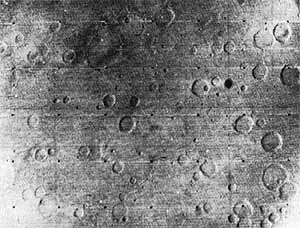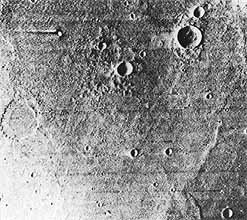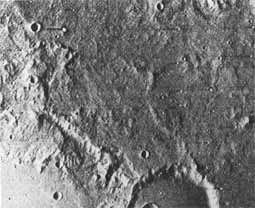















|
 | |
 |
[Whole page 178] Mariner 6 took near-encounter photos of Mars on 31 July 1969. Frame 19 (above), 3613 kilometers from the surface, shows flat-bottomed craters a few kilometers to a few hundred wide, High-resolution frames 20 (left) and 22 (below) show smaller, bowl-shaped craters, resembling primary impact craters found on the moon. |
 | |